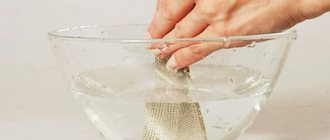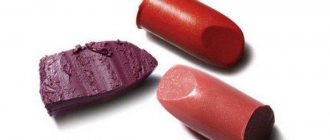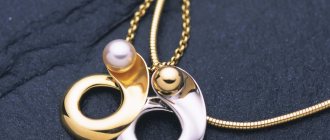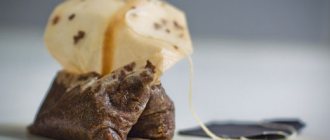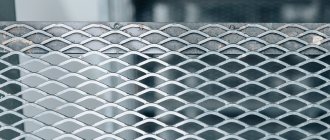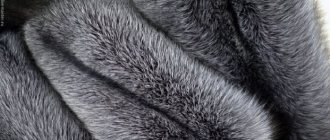Nowadays, fur products are made from various materials, from expensive natural rare animal skins to artificial ones that every woman can afford. But no matter how expensive the material is, no one is immune from the fact that it will turn yellow and lose its presentable appearance. Then the question arises: how to remove yellowness from fur?
To clean your fur, you can go to a dry cleaner or do it at home using effective, proven cleaning methods.
Why does fur turn yellow?
Firstly, it comes from old age. Without nourishment, fur hairs lose their pigment, and precipitation and bright daylight accelerate this process.
- The yellowness is distributed unevenly: first the guard hairs lose color, and a little later the undercoat.
- Not only white furs are susceptible to yellowing, but also arctic fox, silver fox and sable.
Dust, sweat, dirty sediments and cosmetics are gradually absorbed into the structure of the hairs and spoil the appearance of the fur. Therefore, it is important to regularly pay attention to a fur coat, hat and fur collar in order to remove dirt in a timely manner.
Look at the photo of the yellowish fur, how unattractive it looks.
Causes of yellowness
A white fur coat made from noble mink is the height of elegance, but over time it can lose its luster and become yellowish. By the way, a similar incident happens with any product made of light-colored fur: arctic fox, rabbit, etc. There are several reasons for this:
- Improper storage of clothes at home. It is better to do this by covering the item with a “breathable” cover and placing it in a cool room away from sunlight.
- Using perfume and other cosmetic substances directly on the mink itself or near the product.
- Frequent wearing of clothes during precipitation, which in cities has a large amount of chemical impurities.
- Lack of regular care - particles of dust and dirt significantly spoil the appearance of outerwear.
- Drying fur coats near radiators. It is recommended to produce it naturally, by hanging it on a hanger.
Tip: if you are used to using foundation, complement your look with various scarves or stoles that will act as a barrier between makeup on your face and light fur.
Rabbit fur
Bleaching yellowed rabbit fur at home is quite simple. However, to complete such a “mission” you will need special ingredients, as well as a huge amount of free time.
To begin with, the item should be shaken off, because in most cases, yellowness is detected at the moment when a fur coat, vest or other item is removed from the closet, which serves as a storage place for the period of non-use. Next, the product needs to be laid out on a damp sheet with the fur down and lightly pressed down. This way, you will get rid of dust that has penetrated into the small fibers of the undercoat. After this, the clothes should be left in a warm, dry room, away from heating devices, allowing them to dry.
There are two methods to restore natural whiteness:
- Dry, using bulk materials;
- Wet, using various cleaning solutions.
It is worth noting that the most effective remedy for combating the yellowness that appears on rabbit furs is a solution of ammonia and. The recipe for preparing 1 cup of the cleaning mixture is quite simple: you will need 5-6 drops of ammonia and 1 tablespoon of salt. To apply, you should use a sponge, a cotton swab or a special brush with soft bristles. Having distributed the product over the entire area of the product and left it for 5-10 minutes, wash off the remaining mixture with running water and send the item to dry. It is important to remember that furs should be dried away from sources of artificial heat, under the influence of which various defects may appear!
If you are not ready to work with cleaning solutions, you can try to restore the whiteness using bulk sorbent materials. For this, grated chalk, talc, semolina, potato starch, wheat bran or sawdust:
- They crumble, covering every centimeter;
- Rub into the flesh with smooth, careful movements;
- Shake things off.
A simple “combing” of the pile with a regular brush will help get rid of the “residues.” But in this case, the procedure will have to be repeated more than 3-5 times.
Mink fur
If for some reason you were unable to protect your fur coat from the appearance of its characteristic yellowness, do not despair and rush headlong to the dry cleaner. Through trial and error, owners of mink products managed to find out that this method of dealing with a detected defect is relevant only if the problem is identified in a timely manner.
You can try to bleach yellowed mink fur using available products. For this you can use:
- Wheat flour (or potato starch) calcined to 70-80 degrees. It is applied to the surface of the product while hot, rubbed in with a dry sponge, and then removed by standard “knocking out”;
- Bran cooked in a metal bowl and heated to 40-50 degrees adsorbs yellowing no less effectively than the previous option. If they are unavailable, you can use wooden litter for the cat litter box, or sawdust from hardwood;
- Ammonia, hydrogen peroxide, ground chalk, veterinary shampoo and blue. But it is worth noting that this mixture does not clean, but “masks” the defect.
Semolina and flour
This product is widely used for cleaning fur and down scarves. The method is simple, cheap and effective. Cereals remove dust, dirt and grease.
- The fur coat or collar should be laid out on a horizontal surface and semolina should be sprinkled in an even layer.
- To clean the hat, you will need to put it on a three-liter jar wrapped in a towel.
- After this, you need to carefully comb the fur with a soft brush until the rump turns gray.
- If the color is not restored, you need to repeat the procedure with a new portion of semolina.
- Shake the product to remove grains. You can also use a vacuum cleaner at low power.
Instead of semolina, you can use flour, but first heat it in a dry frying pan. Work with flour until it darkens. Then use a new portion.
Dry bleaching
This cleaning method uses simple dry substances, most of which are found in the kitchen or home medicine cabinet.
Absorbents: flour, starch, talc, semolina
Any of the above will definitely be found in the house. Firstly, they absorb dirt well, and secondly, these bulk substances will help if necessary to clean yellowed fur.
- Flour will do a great job of removing the yellowness of the fur. Sprinkle a small amount of it onto the pile. If you preheat the flour, the dirt will be absorbed into it much better. You can wash off the flour with a sponge soaked in purified gasoline. After the gasoline has evaporated, rub in the starch.
- Starch can also be safely used for stains. Sprinkle a little onto the fur, spray with water from a spray bottle, and then wipe with a dry cloth. Shake and comb the item.
- Semolina for stains will also work. A small amount of it should be poured onto the contaminated area, knead the fur a little with your fingers, and then clean off the residue with a soft brush. If the stain remains, the manipulation can be repeated.
- Talcum powder is indispensable if an item has accumulated a lot of dust after hanging in the closet for a long time. Spread the fur coat on a flat surface and carefully apply talcum powder to the fur. After 15 minutes, simply shake off the clothes. If there are particles left on it, use a brush or vacuum cleaner, but only at the lowest power.
Advice! For cleaning and regular care, buy a special fur brush. For long hair, combs with infrequent teeth are suitable - they will not spoil the undercoat. But for shorter fur, brushes with soft bristles are indispensable. They can easily remove dust from furs. You can use old combs or pet brushes.
Wheat bran
Blue mink coats are the easiest to clean with bran. They need to be slightly dried and heated in a frying pan without fat.
Starch
How else can you clean white fur from yellowness? Starchy substances perfectly clean and refresh the color of fur. The product is laid out on a horizontal surface, starch is poured on top in an even layer (through a strainer).
A solution of water and detergent is poured into a spray bottle and the fur is sprayed. When the hairs are dry, carefully comb the hairs with a clothes brush.
Another effective remedy is to clean furs with a mixture of starch and refined gasoline. The ingredients are combined to form a paste, applied to the yellowed areas and left to dry. Then simply remove the starch with a clothes brush.
When to turn to professionals
It is recommended to dry clean fur clothes in the following cases:
- detection of old stains on the pile from coffee, fruit, wine and decorative cosmetics;
- large size of the soiled item;
- ineffectiveness of folk remedies and fur care sprays;
- the appearance of stains on fur shoes.
Items are accepted for cleaning only if they are no more than 4 years old.
Fur, especially if it is white, easily absorbs sweat and various contaminants. Therefore, in order to avoid its premature wear, it is recommended to periodically refresh things, while removing all dirt from the pile. Fur cannot be washed in a machine, so when purchasing outerwear, find out what methods exist for cleaning it.
Source
Salt and ammonia
For cleaning, prepare a mixture:
- Alcohol - 1 tsp;
- Salt - 3 tsp;
- Water - 500 g.
The finished mixture is applied with a spray bottle, distributed over the hairs using a clothes brush and left to dry.
Removing greasy stains
If grease splashes onto the fur, prepare one of the following solutions:
- ammonia and white spirit (1:1);
- salt (3 tbsp), ammonia (1 tbsp) and water (0.4 l);
- vinegar and water (1:1).
Then treat the stained areas with a cotton swab soaked in the resulting product. After 30 min. Wipe the pile first with a damp cloth and then with a dry one.
There is another way to remove grease stains. To do this, heat the bran to 50 degrees in a frying pan and rub it into problem areas. After the fat has dissolved, shake off any excess product and comb the fur with a comb.
Wet cleaning with home remedies
Washing solution:
- To treat the product, use detergent for cats/dogs, since it contains substances against the appearance of yellowness.
- Dilute a little shampoo in warm water, then use a soft sponge to apply the solution to problem areas along the hair growth path.
- Instead of pet shampoo, you can use white liquid soap.
And to enhance the whiteness effect, add a couple of tablespoons of hydrogen peroxide to the water.
Precautionary measures
Rabbit fur is a delicate material, so when cleaning you need to follow some rules to prevent damage:
- do a test before the procedure. Apply the product to a small area of the pile for 15 minutes. If the color and structure of the fur have not changed, then proceed to cleaning;
- do not use brushes with hard bristles and frequent teeth;
- dry without a hairdryer, away from radiators, heating appliances and direct sunlight;
- comb the fur in the direction of hair growth;
- wash using liquid powder;
- do not wring things out;
- To prevent the fibers from sticking together, comb them while drying;
- Do not treat fur with detergents that contain aggressive chemicals.
Blue
The effect of whiteness is obtained by displacing a yellow tint with blue pigment. To make a working solution for processing furs, just a couple of drops of blue in a bowl of water is enough. Make sure that the solution turns out to be a soft blue shade.
On a note! Fur should not be soaked in excess with the solution, as it may become damaged.
You need to lay the product on a horizontal surface and treat the fur with a spray bottle. Then the fur coat is allowed to dry. The final stage is combing with a brush.
Vinegar
How to remove yellowness from fur using vinegar?
- The vinegar solution returns the fur to its original color and shine.
- Take 9% or 6% vinegar, soak a cloth or cotton swab in it, and wipe the yellowed areas.
- To remove the smell of vinegar, the fur coat is hung on the balcony.
Chemicals
You can clean rabbit fur using special products that contain chemical compounds:
- Insaf. Gently cleans the pile and prevents the appearance of new stains on its surface by creating a protective layer. Contains antistatic agent. Insaf is produced in the form of a spray;
- TERRE DE SOMMIERES POWDER. The price of powder with a stain remover effect is high, but it effectively removes greasy stains from the surface of the pile;
- ULTRA FTNISH MILK. The product is produced by an Italian company. It perfectly cleans fur of any type, gives it shine and silkiness. When applied, the villi do not stick together;
- LIVAL LICKER KONZ – removes dirt from fur, returning it to its original color.
Peroxide
This is a safe bleaching agent if the proportions are followed. There is no need to increase the amount of peroxide for a better effect; large yellowness should be treated in several approaches.
- To prepare the solution, you need to stir a teaspoon of peroxide and a few drops of ammonia in a tea cup.
- Moisten a cloth with this mixture and treat problem areas.
- Try not to saturate the leather of the fur item with the solution, so as not to spoil it.
- Treat only the surface of the hairs.
Peroxide and starch
Using this product you can clean mink fur from yellowness. Starch is mixed with peroxide to form a liquid slurry and evenly distributed over the white fur.
After drying, the starch should be shaken off and the coat should be combed with a soft brush. If you periodically update the color of white mink in this way, it will always look beautiful.
other methods
Potato starch with the addition of gasoline will help you clean a mink at home. Mix these ingredients until you get a paste. Distribute the mixture onto contaminated areas. Wait until the fur is completely dry and comb carefully with a fine-toothed comb. You can replace starch with small sawdust.
The yellowish tint can be removed using wheat bran. Heat them in a frying pan to 60 °C, stirring regularly. Then pour onto the surface of the product and rub into the pile. When the bran has cooled, shake the item and brush it out.
To keep natural fur snow-white and beautiful longer, try to clean it from dirt on time. Use simple available means for this - table vinegar, starch, chalk, alcohol and ammonia, detergents, etc. Follow the rules of careful care of the fur product and dry it properly. This is the only way to significantly extend its service life.
Sprays
The industry produces special aerosols and sprays to restore fur color:
- Fresh-Fur is used to restore the color of light-colored furs;
- Magic Snow is used to eliminate yellow plaque on wool;
- Furasol is a dye for fur; you can paint the product in different shades.
Aerosols are easy to work with. The substance is sprayed evenly over the fur and left to dry. Then the product is carefully combed. If you are going to dye the product a different color, the fur must first be cleaned of contaminants by any available means.
Before working with aerosols, carefully read the instructions so as not to damage the fur product. If you are afraid to dye your fur yourself, it is better to take it to the dry cleaner.
What can't be used?
- Fur items cannot be machine washed! Perhaps this is already clear to many, but it is still worth reminding about this. Of course, it’s unlikely that your hand will rise to load a whole fur coat into the washing machine, but someday you’ll want to quickly wash a hat made from an arctic fox with white linen (what if it doesn’t work out). Don't even try!
- Only natural drying! No matter how hard you try to freshen the fur, it will definitely lose its appearance if you dry it on a radiator. Or worse, a hairdryer. Take your time - let the item hang in the fresh air.
- No more than 35 degrees! Even if you treat the fur collar very gently, after cleaning your Arctic fox in hot water, you can say goodbye to it once and for all.
- Don't use hairspray! No, use it, of course. But strictly before you put on a coat with an arctic fox collar. If the adhesive gets on the fur, you just have to cut it off. The rule also applies to insect repellent aerosols.
- Cleaning without acetone and vinegar! Undoubtedly, they are excellent rescuers from stubborn stains. But they will definitely destroy the fur. We need to look for other ways to solve the problem.
